Uzbekistan: Kadvan Valley Ruins
Ўзбекистон: Долина Кадван
The Kadvan Valley Ruins walk offers an easy half-day walk in Uzbekistan from the popular tourism village of Sentob in Uzbekistan’s Nuratau mountains. The ruins of old Sentob, combined with a few other historical buildings and pleasant natural setting along the Kadvan river, make a please outing from Sentob without much exertion.
Total Km: 10.23km
Total Days: 1
Elevation Gain/Loss: 228m+ / 228m-
Start Point: Sentob Village
End Point: Sentob Village
GPS Files
This route is fairly easy, with only the briefest of climbs up to and down from the site of the abandoned village, and otherwise stays mostly flat alongside the Kadvan river on an old jeep road.
The walk starts right from your guesthouse in Sentob village – as the most popular destination in the Nuratau Mountains, there are a fair few to choose from. No matter which you’re staying at, link up to the main village road and join the GPS track at its nearest point to you.
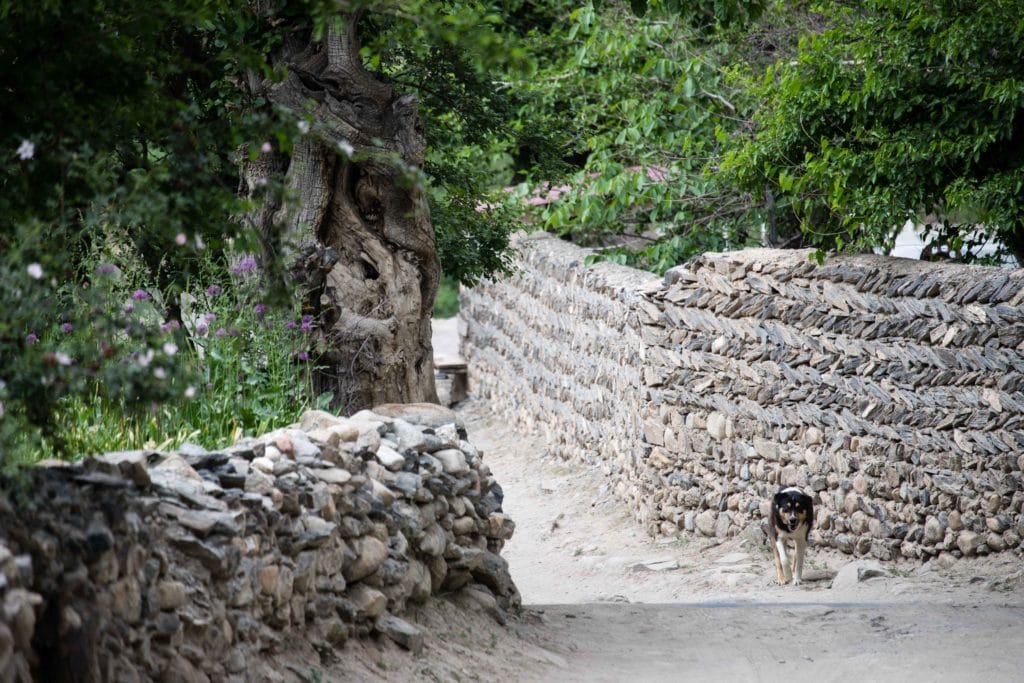
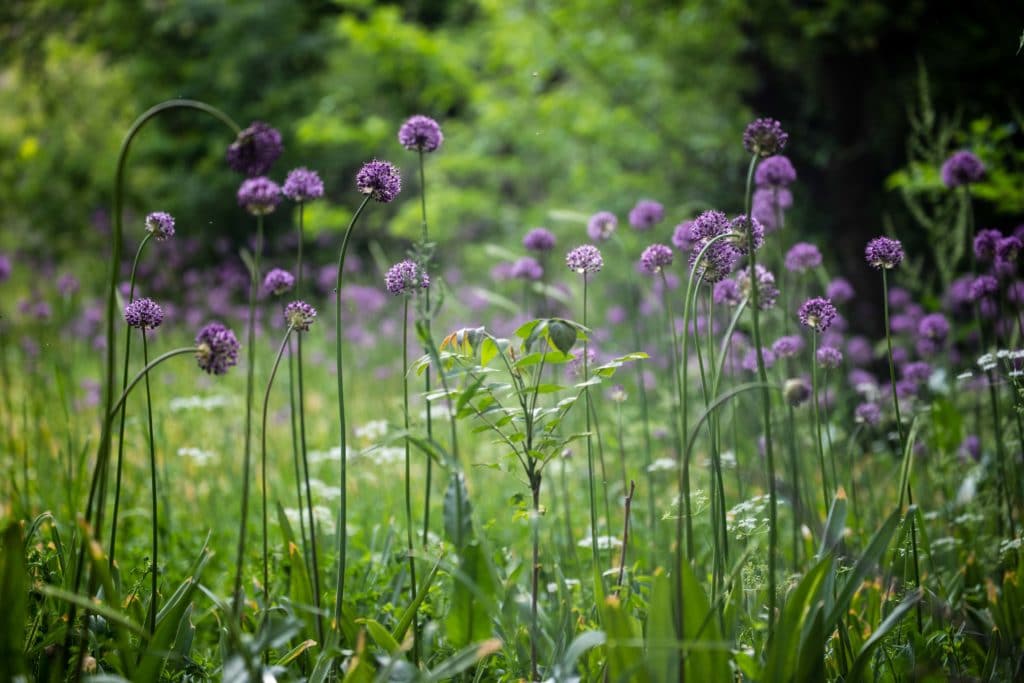
Walking in Sentob is itself quite pleasant. Most of the structures are either made of or fenced by traditional stone walls, and aside from housing most of the village’s useable land is dedicated to agriculture – and also home to a wide variety of wildflowers in the spring.
Locals are generally quite friendly and happy to interact with tourists, though a considerable language barrier will exist for most visitors, and the whole area gives an overwhelmingly welcoming impression.
At any rate, enjoy walking through the village as long as you’re keen, then follow that main road out of village to where it curves downward to a fork that hugs the rock wall on the right or crosses a small bridge on the left – it’s at 3.5km on the GPS track. Cross the bridge, then leave the path briefly to follow the stream around 50 meters up to where a small collection of petroglyphs are carved into the rock face – local guides suggest that they date to the Bronze Age.
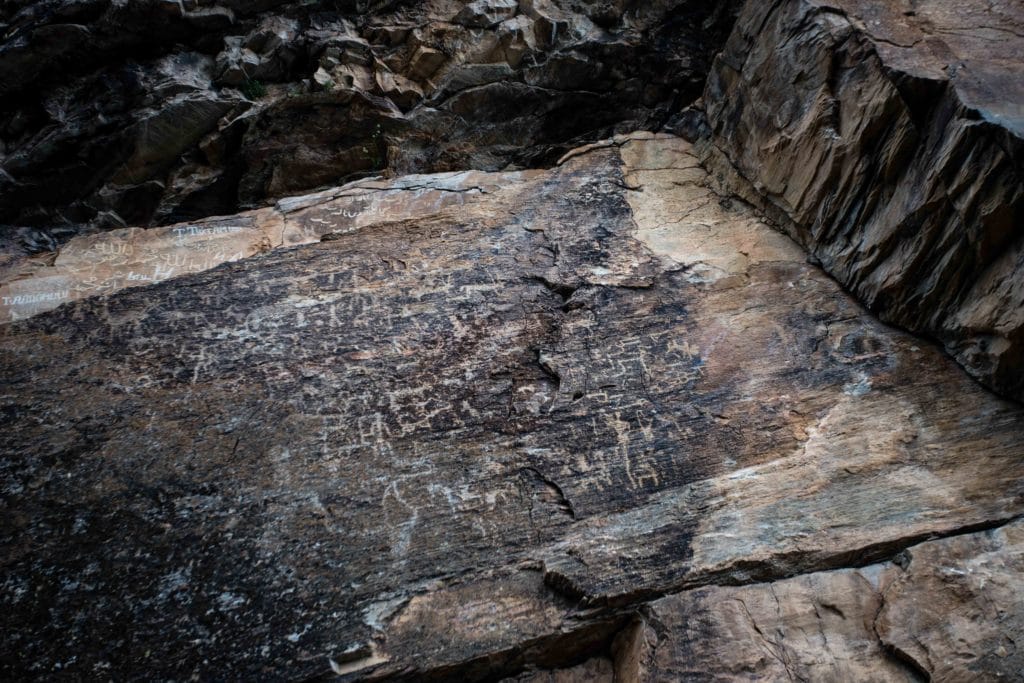
Returning to the bridge, continue along the road to its end at a small homestead, and look for the obvious path that rises above the left-hand side of the house and then climbs behind it to the obvious rock outcrop above and to the right. It’s about 100m of vertical elevation, difficult only in comparison to the otherwise flat nature of the day’s walk.
At the top, you’ll have your first clear view of the ruins of old Sentob.
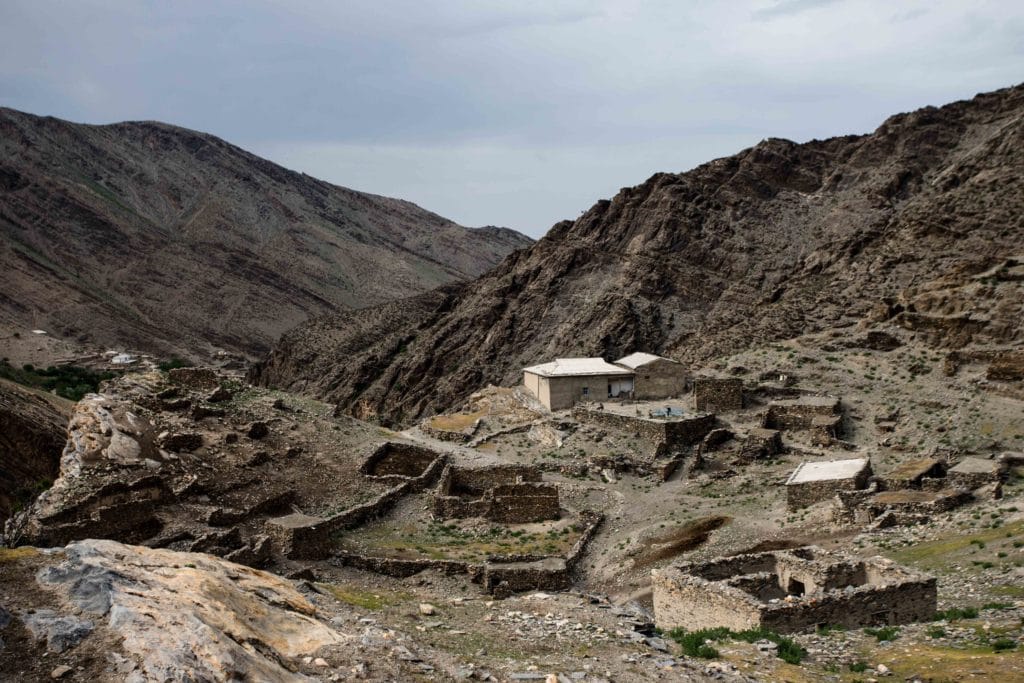
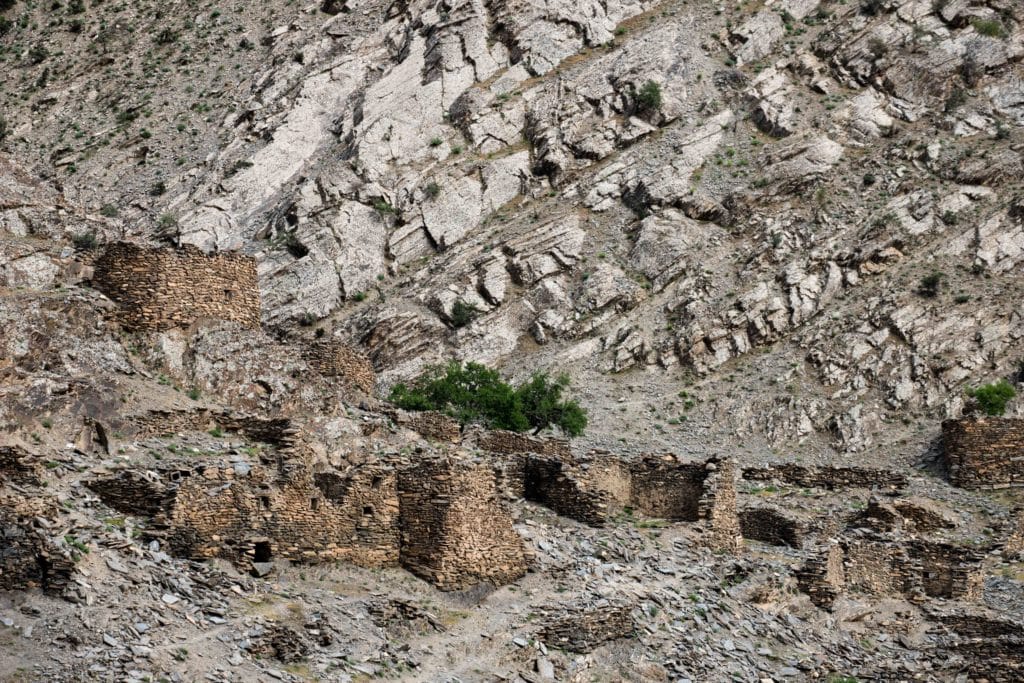
As with most of the villages in the Nuratau mountains, Sentob previously existed as a small stone village tucked away here on an unprepossessing plateau primarily for safety – most of these villages have existed for centuries, when marauding attackers weren’t unknown. According to locals, they were largely abandoned during either the Imperial period or during Soviet-era collectivisation, and even those who later moved back elected to live at lower elevations in the more modern structures you’ll have passed on the way here.
Sentob’s abandoned village is both larger and more densely packed than most, and wandering it makes for a somewhat haunting experience. One local family does still live up here on the plateau, in the obviously new building that’s the first you’ll see when you arrive, and while the family is quite friendly their dogs are not – have a few rocks or a hiking stick handy just in case.
While exploring the ruins, be sure to make your way over to the cliff edge for a look at the Kadvan Valley as it stretches out to the southwest, including an abandoned Soviet-era camp just below the cliffs.
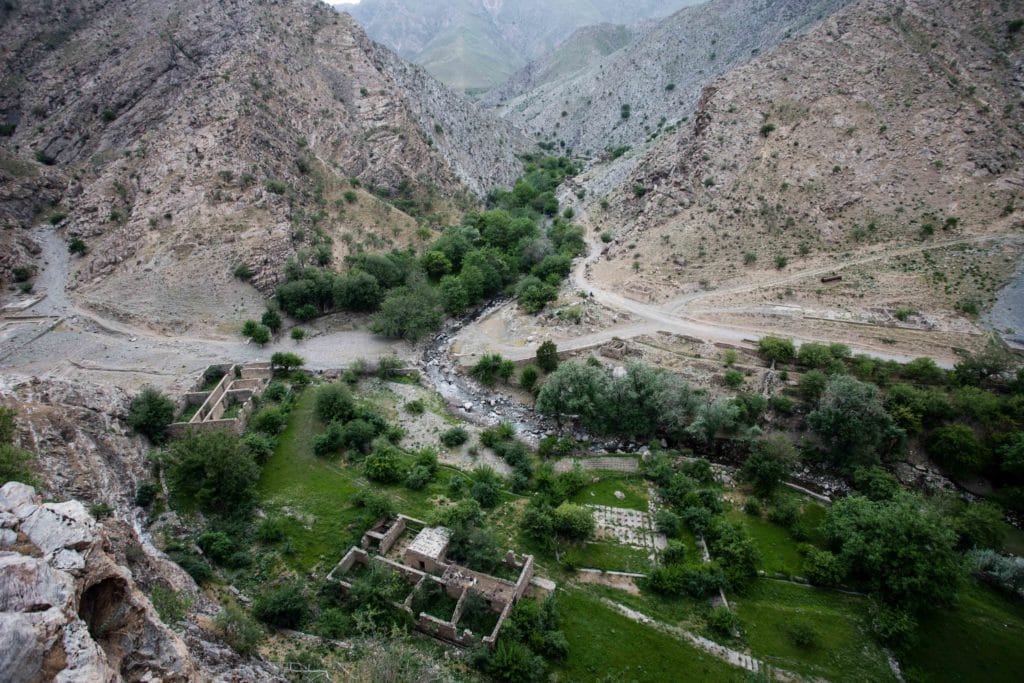
After exploring the Kadvan Valley ruins up top, look for the path that dips sharply down to the SSW – part of this is a steep but beautiful carved rock staircase that circles down around to the top of the abandoned Soviet camp, and the old broken bridge there.
Follow upstream until you find somewhere to comfortably skip across the river – if the water’s not high, there are plenty of boulders and stones that make it easy enough. Once you do, rejoin the dirt road that runs along the western side of the Kadvan river, walking past old homesteads and newer ‘summer homes’ that some villagers move to in the warmer months of the year to be closer to their livestock. In particular, keep an eye out for the abandoned watermill just beside the trail, which if you have a peek under still shows some of the technics that made the mill work.
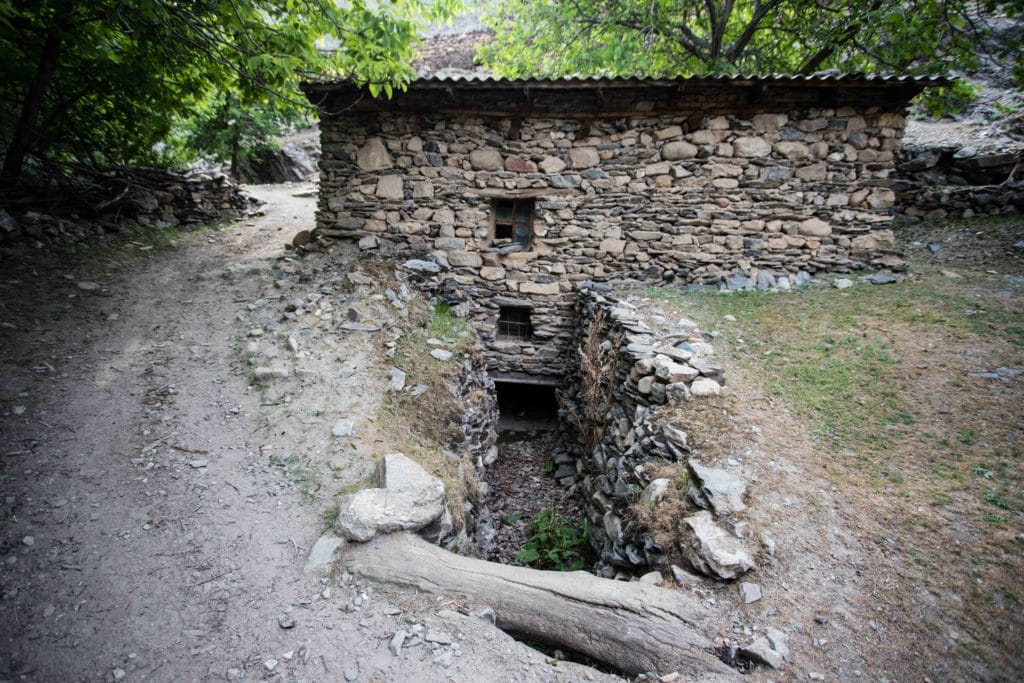
Soon the trail begins to cross the river more frequently, sometimes without any convenient dry-foot crossing points. Continue up the valley as long as you’d like, or until you’re unable to follow the path across eventually, before returning back to Sentob village along the same path that brought you here.
Alternate Options for Kadvan Valley Ruins
It’s possible to continue onwards up the Kadvan Valley beyond the end of this recorded route – eventually you’ll come to a large valley fork at which the right-hand path will lead steeply up to the Fazilman Lake or the left-hand path will lead down to cross the river and then further up to the end of the Kadvan Valley and a small waterfall.
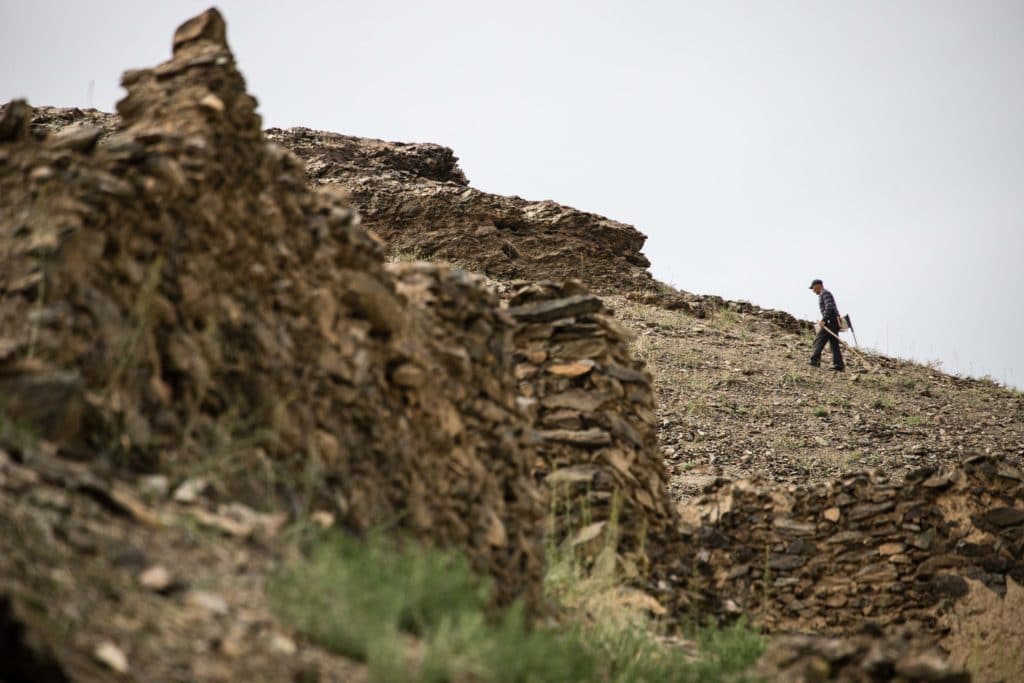
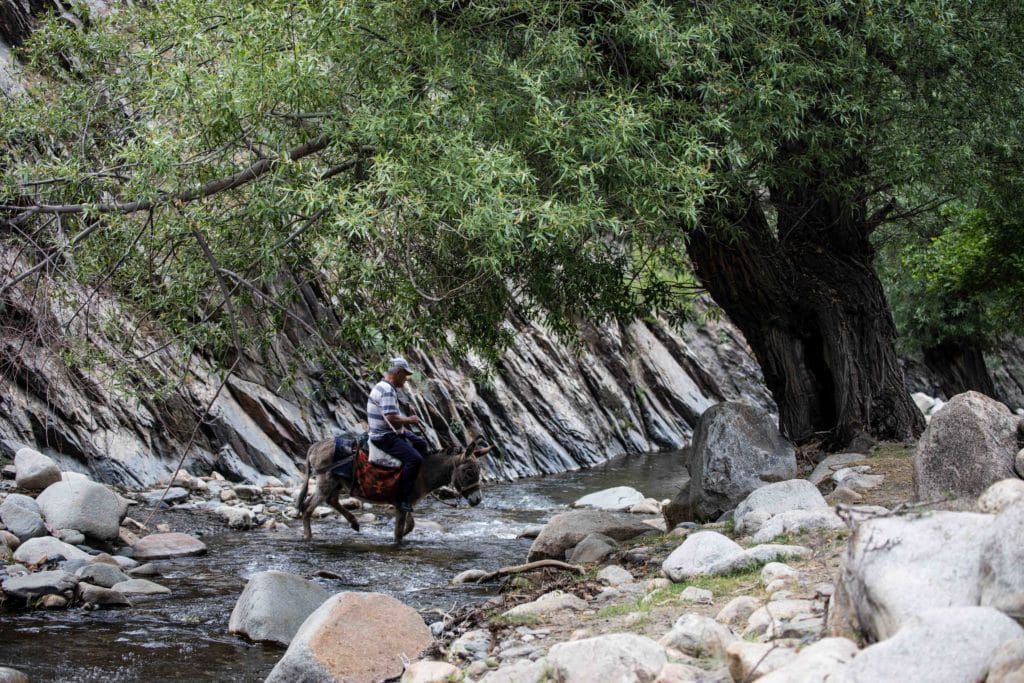
Good To Know
There are no entrance fees to the Kadvan Valley and you don’t need anything apart from comfortable shoes and a water bottle. Even the sun isn’t as brutal here as elsewhere in Nuratau, given that much of the route is shaded, but you’d do well to pack a hat and sunscreen anyways.
We traveled throughout the area with Ruslan of Nurata Tours, and were quite happy with the prices and service. Our friend Shivya of The Shooting Star visited the Nuratau region with Responsible Tourism, another local operator, and also reported being pleased.
Getting to the Kadvan Valley Ruins
Infrequent share taxis do run towards Sentob from Jizzakh, but you may well spend ages waiting – most visitors would be best off visiting with a local tour operator to combine the village with others in the Nuratau region.
Where to Stay and Eat
There are at least five guesthouses in Sentob village, maybe more. We stayed with Komil, whose house is the starting point of the GPS file linked herein; his house was the perfect combination of relaxing and comfortable, well-located for exploring the village, and hosted by a friendly family who make excellent food. However, any of the other guesthouses (whose locations are also saved in the GPS file here) will likely be the same, so it’s hard to go too far amiss no matter where you stay. All guesthouses can prepare packed lunches for days that you’re off hiking, but if you’re just coming in for a daytrip you might do better to just prepare food yourself.

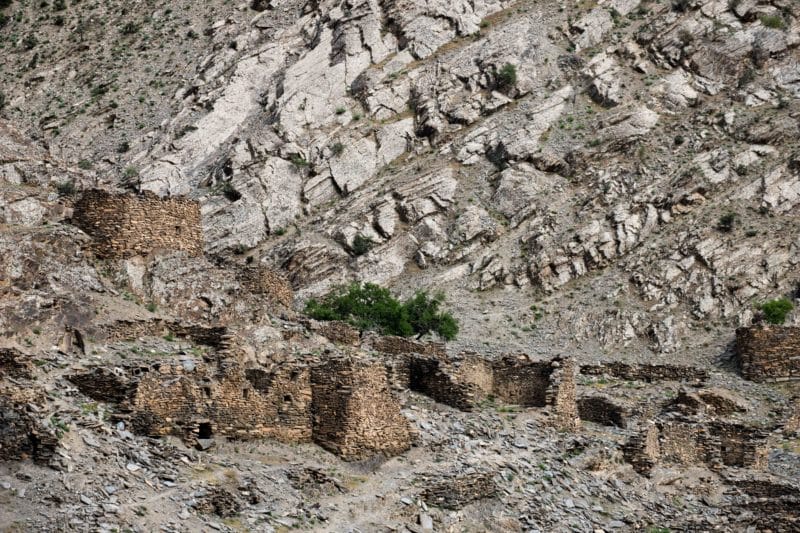

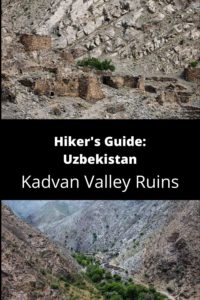
Pingback: Uzbekistan: Fazilman Lake Loop - Asia Hikes
Pingback: Uzbekistan: Sentyab Ridge Loop - Asia Hikes
Pingback: Uzbekistan: Nuratau Mountains Hiking Guide - Asia Hikes